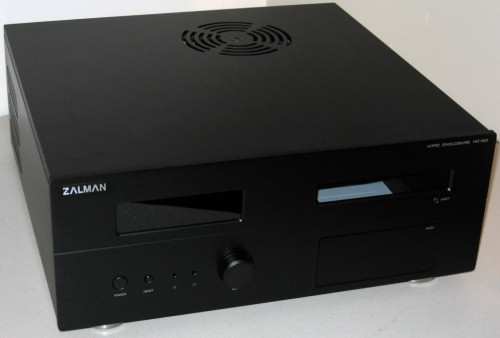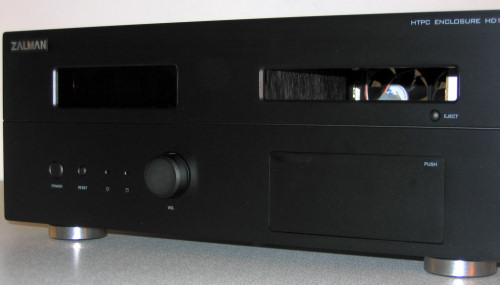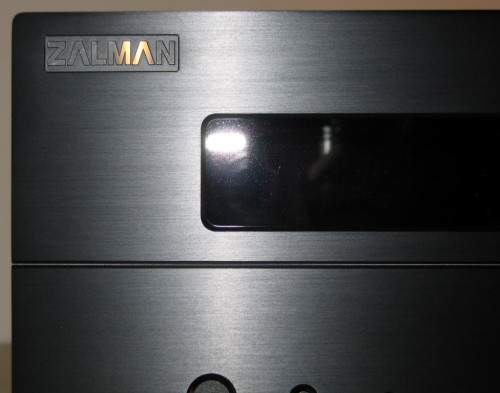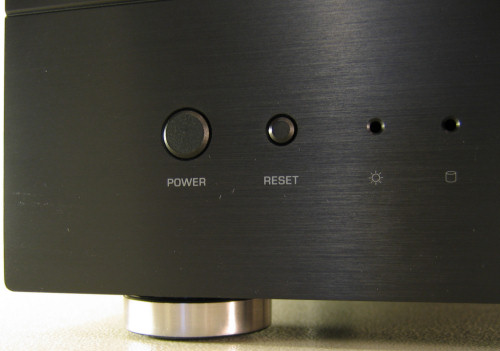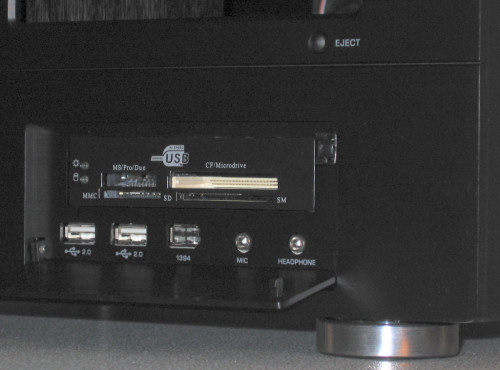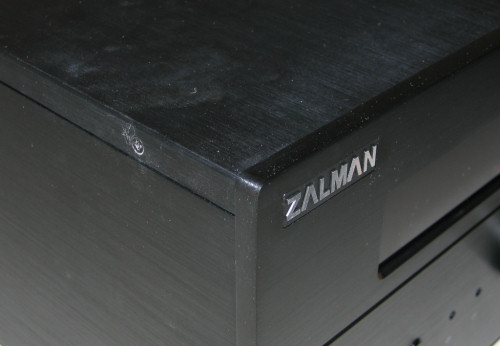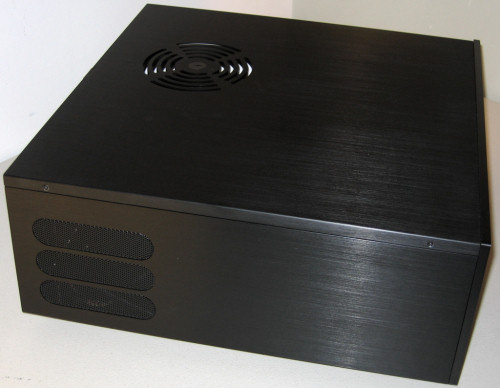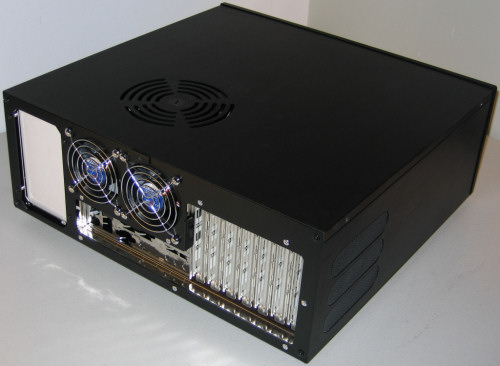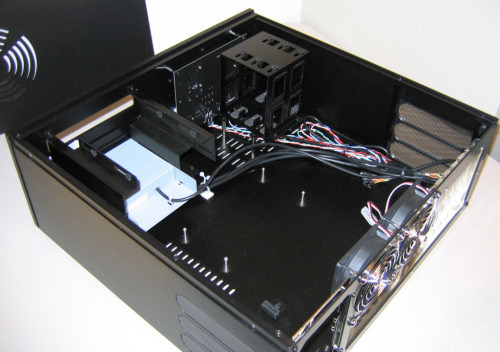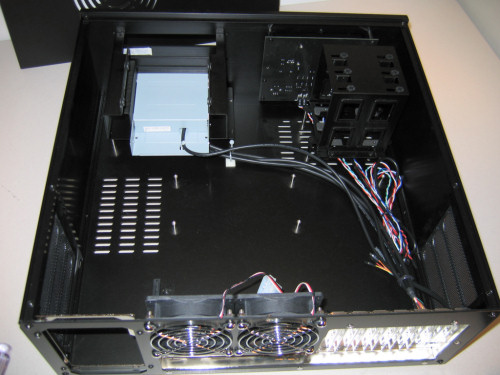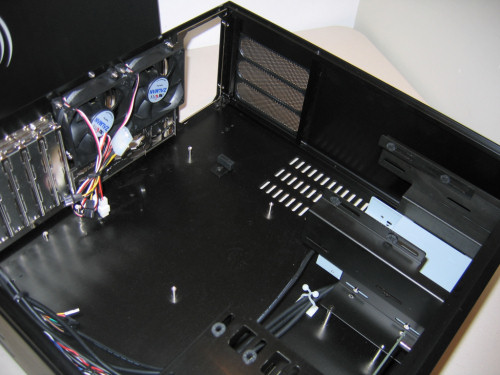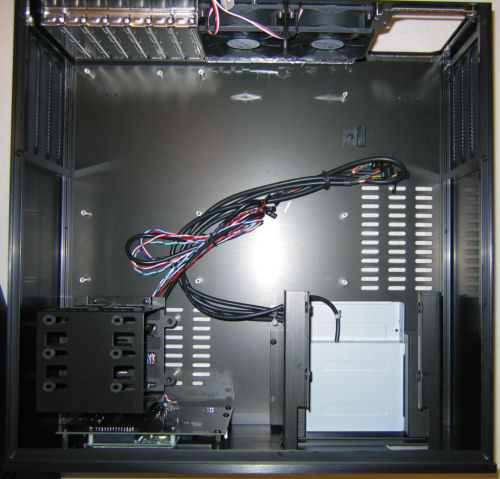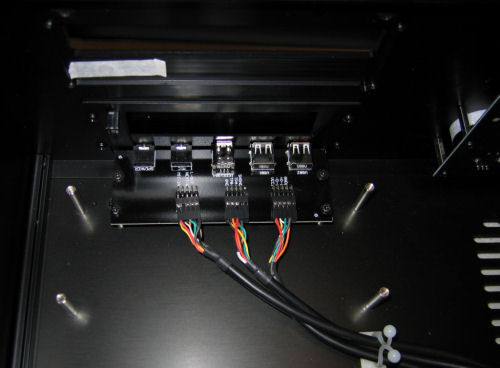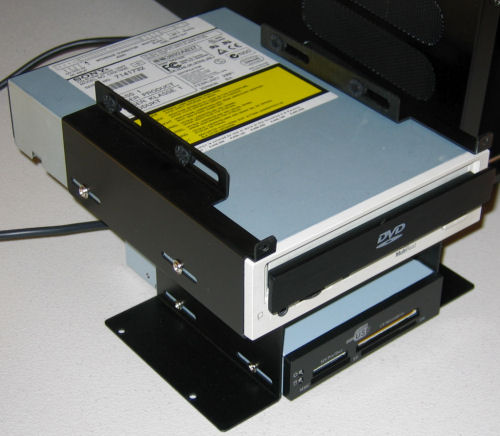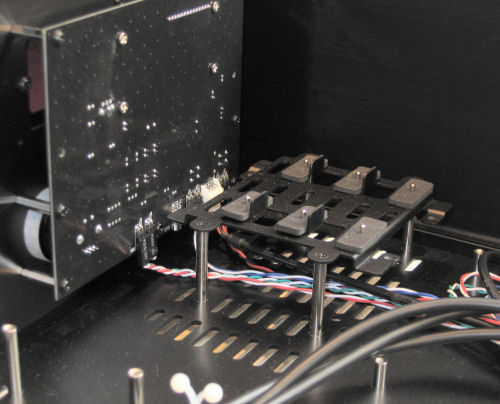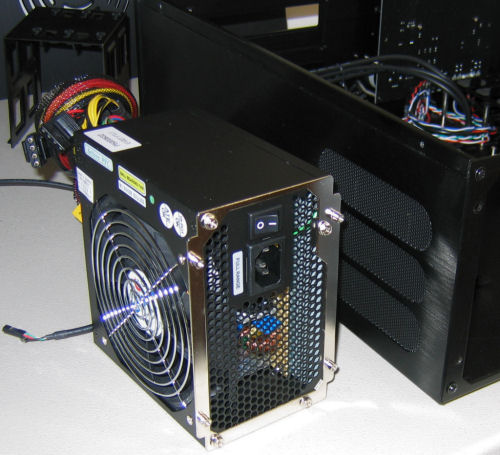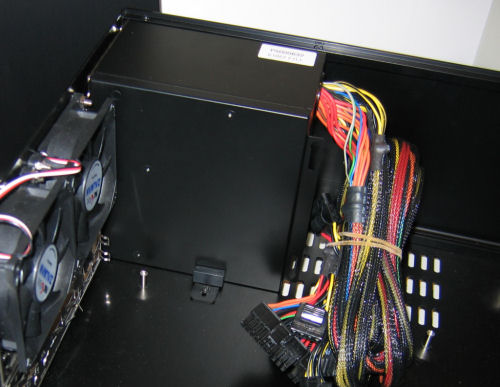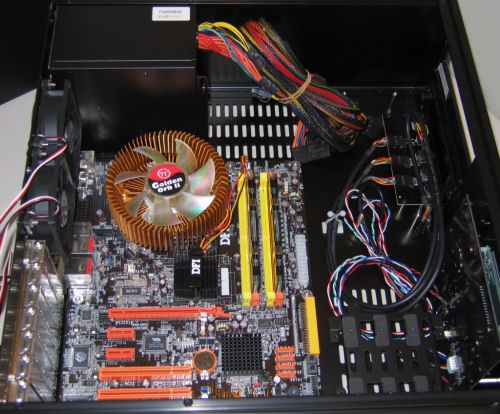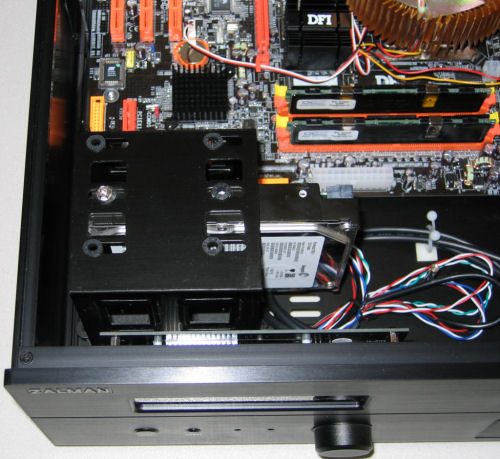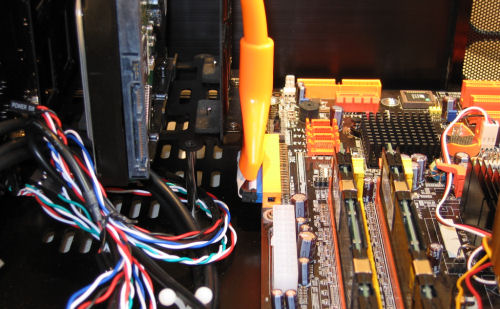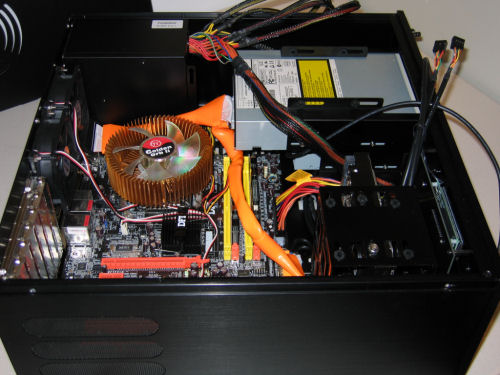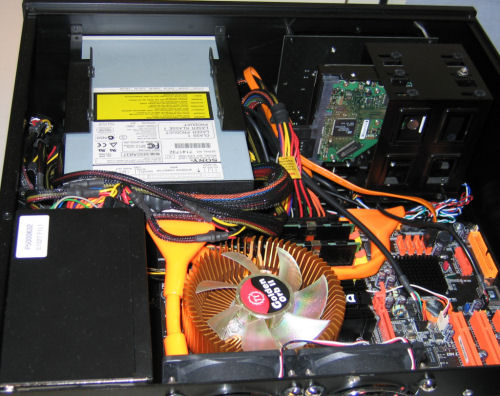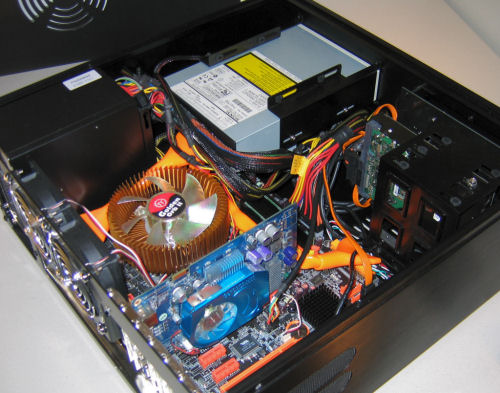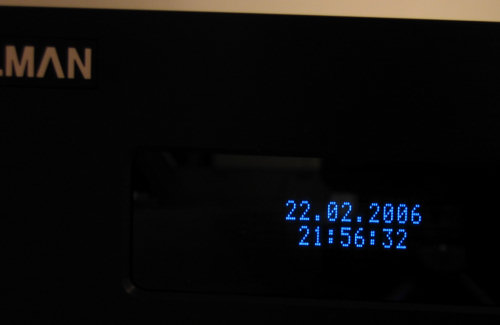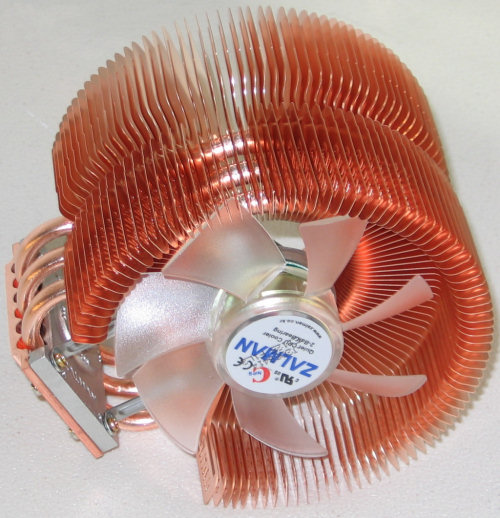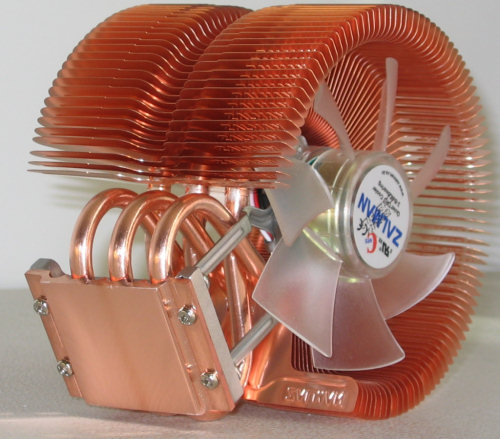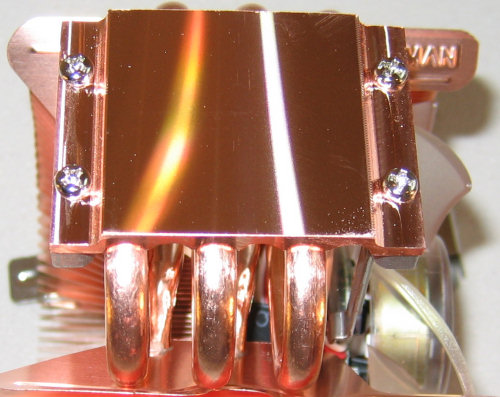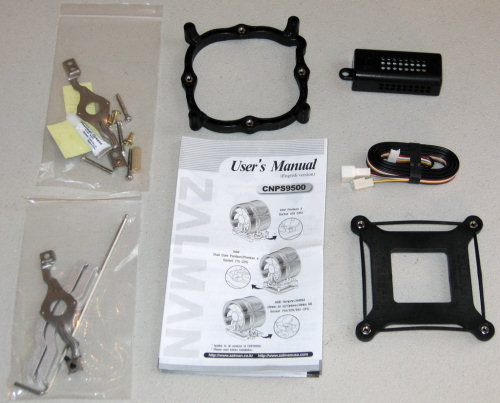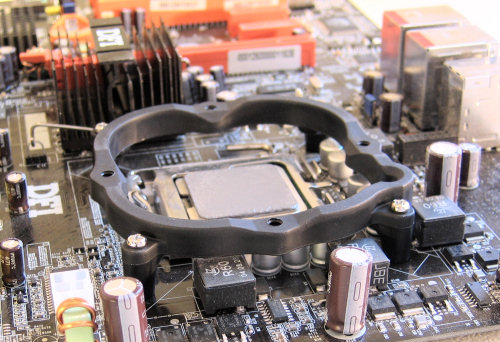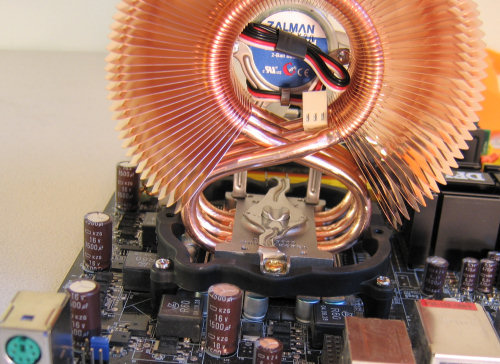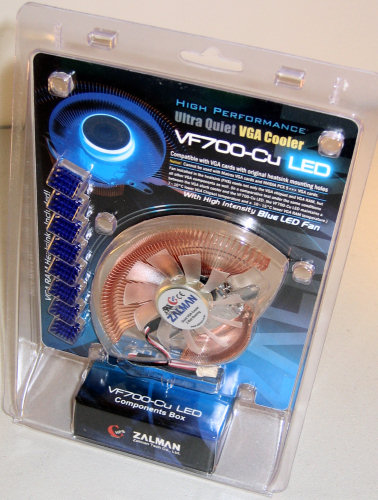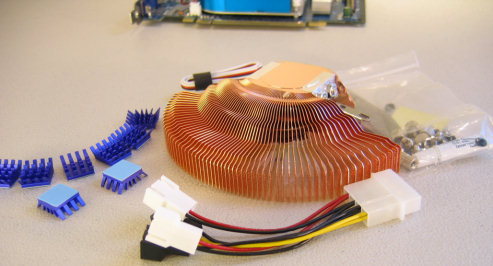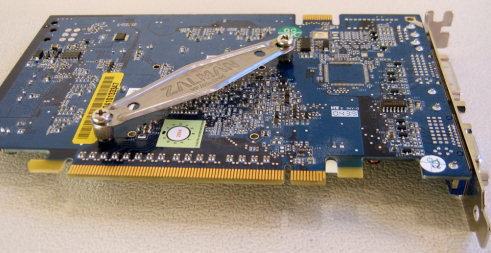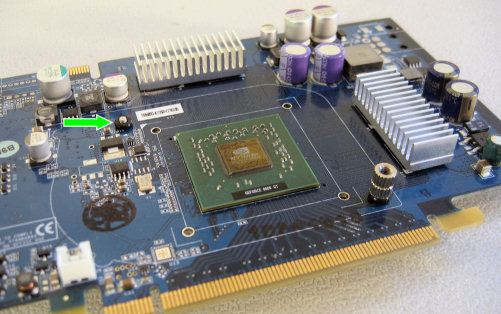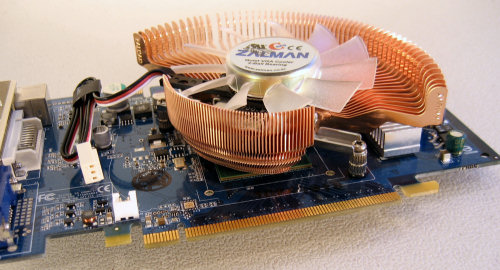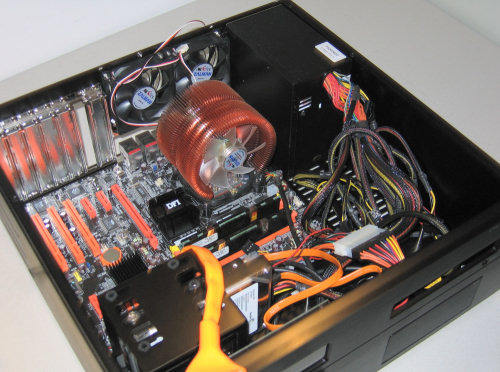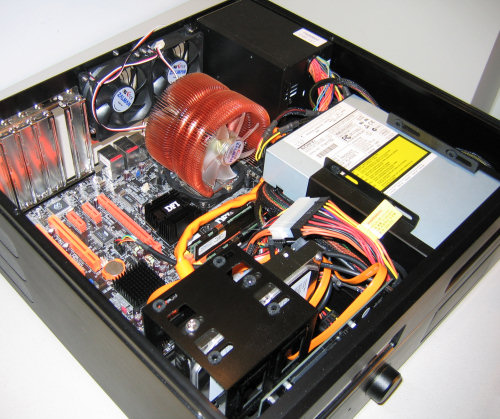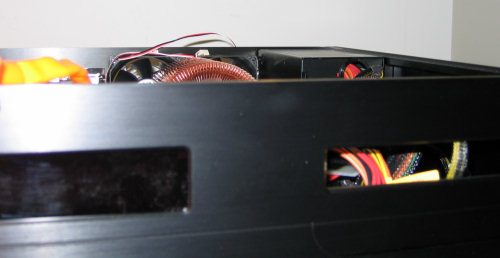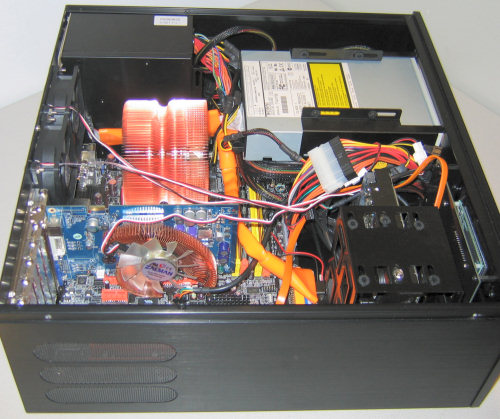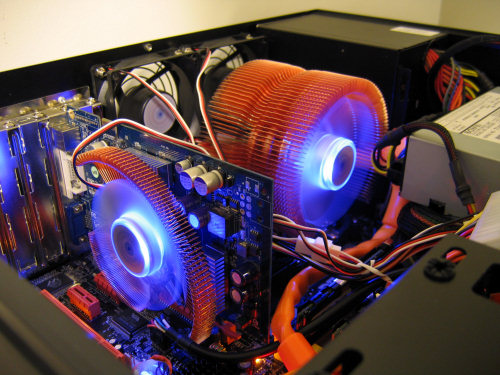
Original Link: https://www.anandtech.com/show/1981
Zalman HD-160 and Accompanying Products
by Joshua Buss on March 31, 2006 12:05 AM EST- Posted in
- Cases/Cooling/PSUs
Introduction
It hasn't been that long since we last examined the HTPC scene, and afterwards, we were starting to wonder if anyone knew just exactly what it took to engineer a perfect HTPC case. We say this not because the last four cases we reviewed were poor performers, but simply because it seems like each one managed to just barely miss something that, when it comes right down to it, is pretty important in an home theater case.
Zalman hasn't had much of a history in case design per se, but their presence in the cooling industry is now practically ubiquitous. Starting especially with the fantastic 7000 series CPU coolers, and also with the outlandishly extreme TNN500A 100% passive case, they've made a name for themselves as the forefront proponents of silent computing.
Now going directly after the HTPC market, Zalman has recently released the HD-160 case, a moderately sized, mid-to-high priced, 100% aluminum ATX compatible chassis available in black and silver, and accompanying our review of the case, we'll be looking at their latest power supply, the ZM460-APS, their latest CPU cooler, the CNPS-9500, and their popular GPU cooler, the VF700-Cu.
First, we'll examine the case and test it using the same hardware that we've used to test our other HTPC cases, but then we'll switch our standard ATX test bed's CPU and GPU coolers for Zalman's and analyze how the performance changes.
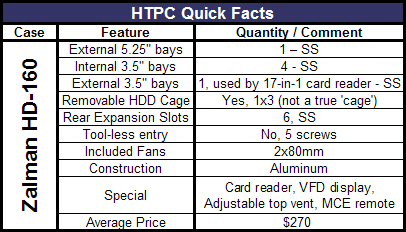
(TL: Tool-less, TS: Thumbscrews, SS: Standard Screws)
For more information on the HD-160 and the other products in this review, please check out Zalman's website.
HD-160 Case - Exterior
Like any good HTPC case, the HD-160 makes a great immediate first impression, with a simple, uncluttered front and general design characteristics that should blend in well in any home theater situation.
A few promininate features include the VFD display, volume knob, and the hidden media slots/ports access. Also note the large vent on the top towards the rear. In this next more head-on shot, the clear labels are easier to see. Without a lot of extra buttons or features on the front, the HD-160 should be a breeze to use, even for a complete beginner to the HTPC realm, and the volume control is a nice touch that only adds to this concept.
An extremely close-up picture shows the brushed aluminum finish of the case fairly well, and also the nice integration of the VFD display. The Zalman symbol in the upper left corner is chrome-finished with miniscule horizontal etchings, and is on its own set-off area.
The lower left corner houses the power and reset buttons and standard dual LEDs, without anything out of the ordinary really worth mentioning. The feet of the case itself are also visible in this picture, and once again, fit the standard HTPC look just fine.
The lower right corner has a flap, which covers an included 17-in-1 card reader and typical ports as well. When open, it's nice to see that the ports aren't crammed together too tightly so that using all of them at the same is difficult. This is the only externally available 3½" drive, so if one would want a floppy, they'd have to replace the card reader drive.
The overall construction of the case is superb. With the slight exception of the volume control, (which still feels fairly good) everything feels solid and fits together very tightly. Another close-up shows the thickness of the front bezel and the quality of the Zalman symbol slightly better than before.
HD-160 Case - Exterior and Interior
The HD-160 overall has a generous size. It's a little larger than most other HTPCs that we've looked at in the past, but it's still a manageble size that should work fine; whether or not additional components are included in a stack shouldn't be problematic for most users.
In addition to the vent on the top, this picture shows off one of the two sets of side vents, as well as the removable lid and two of the five screws that hold it in place.
The rear of the case is a bit more interesting, and shows a relatively strong resemblance to Thermaltake's Tenor chassis, reviewed in our last HTPC roundup. Dual 80mm system exhaust fans work in conjunction with the power supply to provide the entirity of the case's active cooling.
While external looks are certainly important, what really matters in an HTPC is the layout of the internal components. Without careful consideration, the components can overheat due to the demands for such a quiet environment, or worse yet, have problems physically fitting with other pieces of hardware. The good news is that the HD-160 has a thoughtful design and shouldn't suffer from any problems with most setups.
Perhaps the most prominent design mark is the vertical hard drive cage situated towards the front, which is a good idea for getting more available hard drives without having to make the case any larger. In addition to a single spot above the 5¼" drive, this leaves the HD-160 with a total of four internal hard-drive slots.
From a slightly different perspective, it's easier to see how the cage is positioned well, for instance cabling shouldn't be too difficult with the decent amount of space between the two removable cages.
Next, we'll examine the back of the case from inside, and upon doing so, we notice that many similarities can be drawn between this layout and a rather typical tower chassis that's simply been laid on its side.
With this observation, it's pretty safe to assume already that the cooling performance of the HD-160 is bound to be on par with other tower designs or, at the very least, among the best of HTPC cases. From a direct top-down view, this claim is even better substantiated, as the case has well-placed intake venting under the hard drives and under the area that wouldn't be blocked by any components.
HD-160 Case - Interior (cont'd)
To take a closer look at the HD-160, we removed components and examined them individually. First, here's a picture of the multi-card reader/port pieces, which (thankfully) uses standard USB connections and is mounted sturdily by several bolts.
The cage itself that was removed to get this picture is pretty standard, which like many other HTPC cases has to be completely removed to install drives, unfortunately. One nice feature is the use of soft rubber grommets to absorb vibrations from the installed hard drive on top.
The new Zalman case's method of stealthing the optical drive is to replace the drive tray's bezel with an included black aluminum piece, and while the fit is pretty good and the end result can be great looking, the double-sided adhesive tape doesn't always guarantee a perfect mount and could be problematic if not attached perfectly the first time.
With the top of the other hard drive mounting unit removed, we can see how these drives are held in place.
The six visible metal pins serve to anchor one side of the drive, while foam pads still get the majority of the pressure from the mount to help control noise. The top of the cage uses the same grommets mentioned before, and after the drive is bolted to the top piece, the entire unit simply screws down at the four slightly recessed corners that are visible here. Besides the somewhat tricky task of lining up the two screws on the front side of the cage (we found the use of a magnetic screwdriver imperative), the installation is on par with other HTPC designs, and ultimately, the slight difficulty of installation is offset by the low operating noise and good cooling performance of the design.
The installation of the power supply is quite similar to other designs that we've looked at before, with a separate plate first attaching to the supply, which then screws into the case. The plate itself is symmetrical with respect to the case's mounting points, so any compatible power supply can be turned either direction in the HD-160.
Something rather interesting about the installation instructions of the HD-160 is the fact that they suggest a different orientation of their own power supply, the ZM460-APS, than they suggest for other supplies. The instructions have the supply's large intake fan oriented towards the side vents, most likely due to the fact that often the ZM460-APS is able to keep its fan still or barely rotating, and if it was pointed towards the inside of the chassis, warm air could be drawn through the supply into the case.
One more soft pad is used again to help dampen possible vibrations, this time from the fan in the power supply. Also worth mentioning is that the whole power supply unit area is nice and spacious, and should work fine even with larger units.
Before getting to the details of the rest of the installation process, it should be noted that Zalman includes a versatile molex adapter with the case that allows the user to run the two rear exhaust fans at either 5v or 12v, depending on the desired cooling performance/noise level. Little inclusions like this are certainly welcome additions to any higher-end chassis; it's always nice to have options.
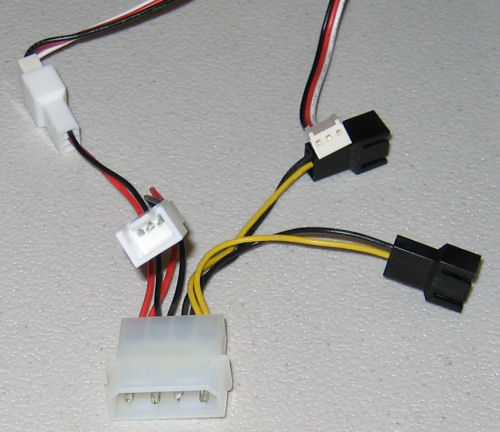
HD-160 Case - Installation
After the power supply, the motherboard is really the next logical unit to put in the HD-160.
With the cages out, our standard test motherboard assembly was very simple to put in place and attach to the included standard ATX mounting points.
Next up is the hard drive, which (as we mentioned before) wasn't too bad except for the two screws that have to go towards the bottom on the front side of this cage.
As it usually tends to be, our sideways-facing primary IDE channel port was once again a bit of a nuisance, but certainly not as bad as it has been in the past. With the option to take out the entire HDD cage (bottom piece included) if necessary, this is really only a minor complaint.
With the necessary cabling and most other components in place, the last cage can be screwed into place, and thankfully this unit, even with the optical drive already mounted, is fairly simple to install.
After this was done, we connected a few cables, including the ATX power cord and IDE cable to get a picture before any real cable management was performed.
Thanks to the extra space on either side of the external drive cage, cable management is a breeze in the HD-160. We were able to route cables much better than in other cases with minimal effort.
Finally, we installed our 6600GT video card, which was about as simple as it could be. Even longer video cards shouldn't have any problems inside the case, thanks to the smart layout.
Included with the HD-160 is a VFD, which by default simply displays "Welcome to HTPC", but after installing drivers, it displays the current date and time, as shown below.
A nice Windows MCE remote is included as well, but the documentation and software for programming the remote are lacking. However, since most of what goes on with the remote and display are only tied directly to Media Center Edition, this perhaps isn't as big of a deal as it might seem. When working in the OS itself, the display has a much better idea what information to display and the controls on the remote integrate automatically with the base software of the OS - especially windows media player.
CNPS-9500-LED
Initially, we were planning on saving our first look at the CNPS-9500 CPU cooler for a larger heat sink comparison article, but Zalman insisted that the cooler was a perfect fit for their new case and we were up to the task of boring out this claim.
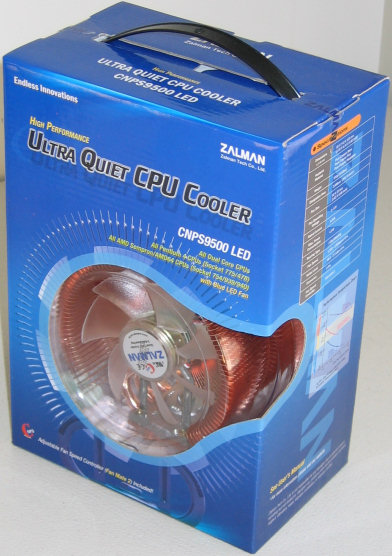
With three discrete copper heat pipes and a relatively small base, the cooler is designed to whisk heat away from the core immediately and carry it around the rest of the unit where the wide fins with even separations can dissipate it efficiently.
A single 92mm fan forces air between the circularly-arranged fins for maximum effectiveness versus minimum air movement.
The base itself is certainly flat and polished well - trying to take a picture to show any imperfections in the near mirror-like finish proved rather fruitless.
Mounting equipment is included to mount the heatsink on Intel 478, and LGA-775, and all AMD 64 sockets, and relatively clear intructions make the process easy even compared to some stock heat sink installations.
The only step that some might consider annoying is the removing of the motherboard for the mounting of the backing plate, but this is to be expected with almost all performance CPU heat sinks, and the fact that the nuts are permanently attached to the plate makes this step much easier than many competing solutions.
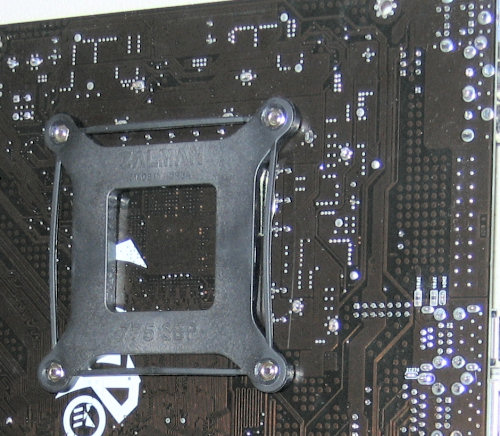
Once the plates are anchored securely and the thermal compound applied, the heat sink assembly is held in place with a single piece of steel, which anchors with only two points, ensuring an even application of pressure between the heat sink and CPU surface.
VF700-Cu-LED
With so much Zalman equipment already in this setup, it seems almost silly not to go all-out at this point, so that's exactly what we decided to do.
The stock cooler on our 6600GT has always been the subject of some concern of ours, due to the high temperatures reported by the driver software, and the rather audible noise of the fan.
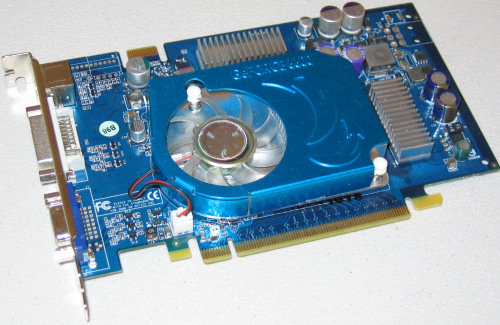
The package includes the heat sink assembly, eight individual ramsinks for the dedicated GPU memory, mounting hardware for both typical ATI and NVIDIA cards, and thermal compound for maximum heat transfer.
The hardest part about installing the VF700 for many cards is probably simply getting the stock cooler off the graphics card safely. Many stock coolers have a strong adhesive-style of thermal paste holding the cooler in place, which can make removing it potentially dangerous. One simply has to be careful to pull slowly and apply enough of a twisting force to prevent damaging the core of the processor.
Once the stock cooler was removed and the GPU surface cleaned, we proceeded to install the Zalman mounting kit which uses another back plate design, which holds itself steady to the card first.
The back plate is held in place using special nuts, which are threaded on both sides. The one on the right in the following picture has already been screwed in place, while the one on the upper left corner only has one of the rubber washers installed so far.
The heat sink/fan combination, which bears a strong resemblance to the popular 7000 series CPU coolers from Zalman, bolts down into these special fasteners, again using only two points to keep as even pressure between the two surfaces as possible.
As this is the first time in a while since we've looked at cooling equipment, perhaps we should mention that there are always a few drawbacks to installing aftermarket heat sinks to any piece of hardware in your computer. Things to consider include voiding warranties and risking the possibility of damaging the hardware due to either physical damage during the installation or an improper installation, which leads to overheating of the equipment. However, simply taking care to follow all instructions and working slowly enough to do everything carefully is normally all it takes to make installing your own third-party cooling equipment enjoyable and rewarding.
Zalman Components Installed
After getting the heat sinks on their respective parts, the next step is simply to put them back into the case again.
It wasn't any easier or harder to put in our assembled motherboard tray, and the cable routing didn't really change either.
It's pretty apparent that Zalman had the CNPS-9500 in mind when sizing the HD-160 after looking at the next picture. The cooler just barely fits, maximizing the benefit of bringing heat from the CPU close to the already good heat dissipation of the aluminum case itself.
The video card installed easily too, and with only a bit of bundling of cables left, the second install was pretty much complete.
Both Zalman parts glow a pleasant blue color, which would normally only be visible with a window or with the top vent open quite a bit, but we wanted to include a shot of them in action as well, just to give them the spotlight that they deserve.
Benchmark Comparisons
To test the new HTPC case and especially the performance change when switching to the Zalman CPU and GPU coolers, we installed our standard ATX test bed with the Zalman provided ZM460-APS power supply. Measurements were made at 22.5 degrees Celcius ambient, and averaged over the course of 5 minutes after running for over 30 in the respective mode. Two instances of Folding@Home , rthdribl, and a comprehensive hard-drive loader are run simultaneously for the "load" test.
| ATX Test Bed | |
| DFI LanParty UT 915P-T12 Pentium 4 530 Prescott 3.0ghz OCZ 512MB DDR2 x 2 Thermaltake Golden Orb II Seagate 120gb SATA Hard Drive Chaintech GeForce 6600GT MSI DVD-CD/R/RW Combo drive Zalman ZM460-APS PSU |
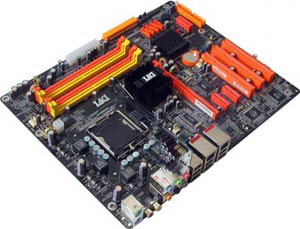 |
Our standard test bed has been a solid set of hardware for reviewing for several reviews now, but one of the first things that we noticed when using the ZM460-APS power supply was how much less heat it put out than the MadDog unit, which we had been using before. Before getting into detail about the other differences, here's a chart showing the performance of the case first with the Thermaltake Golden Orb and stock 6600GT cooler, then with Zalman equipment in its place. The 80mm case fans were both hooked up to 12v connections, the video card into a 5v line, the CPU fan for the Golden Orb II directly into the motherboard, and the CNPS-9500 into the included Zalman FanMate II


Final Words
Zalman's display of their quality of engineering, design, and manufacturing have all been top-notch for each and every product that we've looked at here. With a closer look at the ZM460-APS in the near future, we will surely only add to this concensus, as even with our short amount of work with the unit here, we've grown very fond of the product.
Without a doubt though, the HD-160 is a fine HTPC case. The layout is smart, simple, and elegant. The construction leaves nothing to be desired and should stand up to many years of home entertainment. Its thermal and noise performance were record-breaking, and they only became better when we used the CNPS-9500 and VF700-Cu. If only a perfect, stealthy optical drive system could've been implemented, and a VFD where the digits were more visible from actual living room distances, this could've been the perfect HTPC case that we were looking for when we started. However, the new Zalman case is closer than many by a long shot, and for one who doesn't want to settle for something that "just works", the HD-160 is a great choice, even for the relatively high asking price of around $250. For those who really want to go all out, we'd readily recommend all three products that we looked at in detail; each stands out in its own right.

